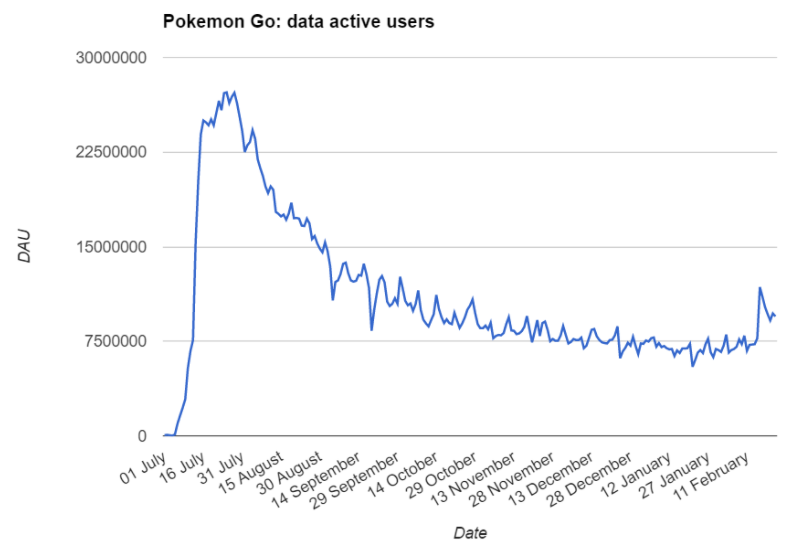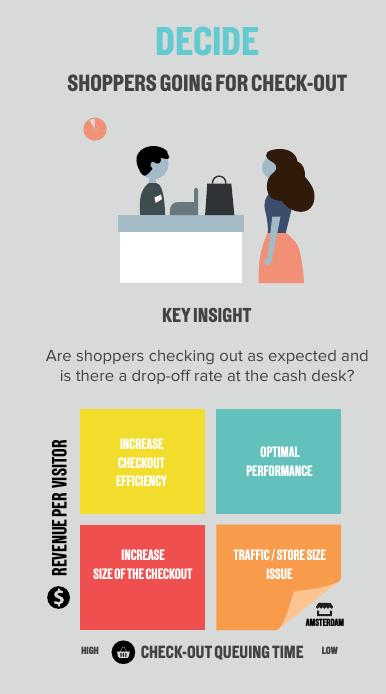Nobody likes to wait.
In retail spaces, waiting (and queuing) arise when demand surpasses supply:
-
the demand of shoppers to pay for bought items surpasses the number of staffers working at checkouts
-
the demand of shoppers looking to try on clothes surpasses the amount of changing rooms they can intuitively find inside the store
-
the demand of shoppers interested to try a shoe of their size surpasses the amount of staff supplying the shoes from the backroom
Waiting and queues are also an indication that something great is happening: shoppers are interested.
However, if we let them wait too long they will change their mind and we will lose the opportunity to sell, but also worsen the image of our brand.
Study case from the online world
Similarly to retail, in the IT world, being able to serve all interested parties is of crucial importance.
To be able to read a website, like the one you are reading now, or use an application, servers (computers) need to serve them to the incoming traffic.

This graph shows the number of daily users of Pokemon Go, a mobile application. After the application went viral, Niantic, the creators of the application, had to meet unimaginable demands. For instance, from July 5th to July 6th there was an increase from about 500,000 to 4,000,000 od daily users, which is an increase of 597%.
Niantic met these demands using solutions which are similar to solutions which can be and are used in retail.
As the number of active users increased, the team added more resources (servers) to respond to the traffic. Similarly in retail, when there are more people coming to check out, new checkout points are opened to mitigate the queues.
Furthermore, Niantic used load balancing. Load balancing helps distribute traffic evenly across different servers, so neither of them gets too much traffic while others are idle. In load balancing, the most important part of the mechanism is the load balancer which directs incoming traffic to different locations.
In the same way, in retail shops, intuitive navigation and helpful personnel serve as great load balancers. If the navigation, in combination with bad layout fails to redirect shoppers to less busy areas, unmanageable queues form and shoppers who were eager to buy will suddenly lose their determination.
In the online world, measuring and acting upon data such as the amount of traffic and response times (the time it takes to display the result to the user who requests a resource) is something which has been present since the beginnings of the industry. This is so because of the tremendous ease of measuring and collecting such data.
When compared to the long history of retail which dates back more than 10,000 years it is possible to see causes of why such data is not at the core of retail experts around the world. Until recently (about 15 years ago) it was impossible to collect such data in a precise, cost-effective and scalable way.
But, with technology progressing exponentially, the costs of measurement hardware is dropping rapidly and, at the same time, the applications are getting richer in features and more precise in measurement.
Solution for retailers

Queue detectors utilize computer vision to determine the number of shoppers waiting, usually in queues. Such data is valuable both in real-time and for providing insights.
Certain retailers utilize these detectors to automatically change smart navigation screens inside the store and to navigate personnel to busier parts of the store.
At StoreDNA, we utilize this data as part of the fleet management strategy to improve every step of the shopping funnel. Comparing queue times at checkout from various stores inside the fleet, it is possible to see which stores need to be improved upon, and which ones can be used as an example.
Introducing new technologies and ideas into staff efficiency management will only be effective if we are able to measure the benefits they provide. By utilizing solutions like StoreDNA it is possible to pinpoint which experiments were successful and which ones should be proliferated across the whole fleet.
Start optimizing your fleet by using real insights based on accurate data today by contacting us at grow@storedna.co.